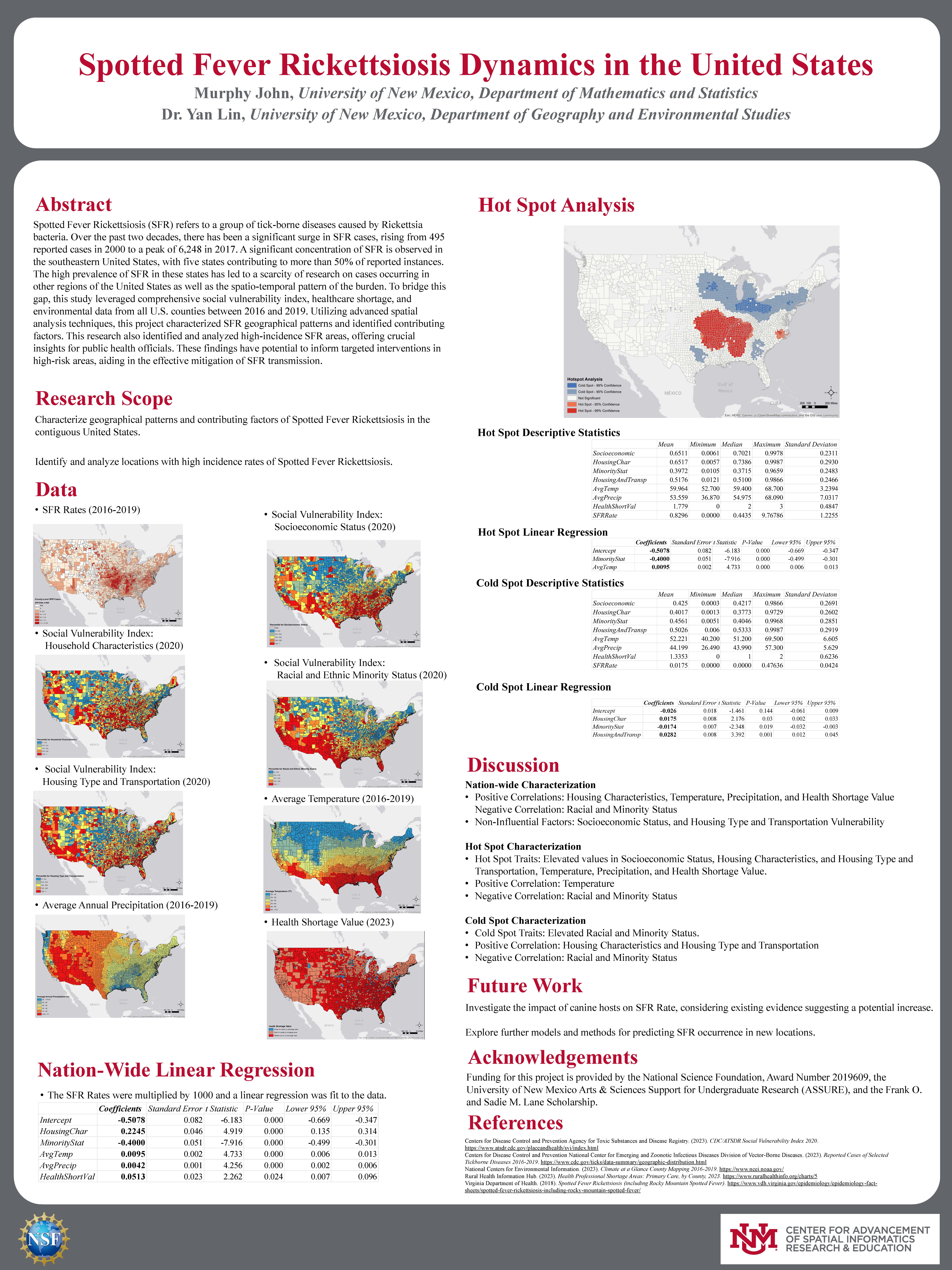Spotted Fever Rickettsiosis Dynamics in the United States
- Student Research -
- ASPIRE Faculty Advisor:
- Students:

Description:
Spotted Fever Rickettsiosis (SFR) refers to a group of tick-borne diseases caused by Rickettsia bacteria.
Over the past two decades, there has been a significant surge in SFR cases, rising from 495 reported cases in 2000 to a peak of 6,248 in 2017.
A significant concentration of SFR is observed in the southeastern United States, with five states contributing to more than 50% of reported instances.
The high prevalence of SFR in these states has led to a scarcity of research on cases occurring in other regions of the United States as well as the spatio-temporal pattern of the burden.
To bridge this gap, this study leveraged comprehensive social vulnerability index, healthcare shortage, and environmental data from all U.S. counties between 2016 and 2019.
Utilizing advanced spatial analysis techniques, this project characterized SFR geographical patterns and identified contributing factors.
This research also identified and analyzed high-incidence SFR areas, offering crucial insights for public health officials.
These findings have potential to inform targeted interventions in high-risk areas, aiding in the effective mitigation of SFR transmission.
